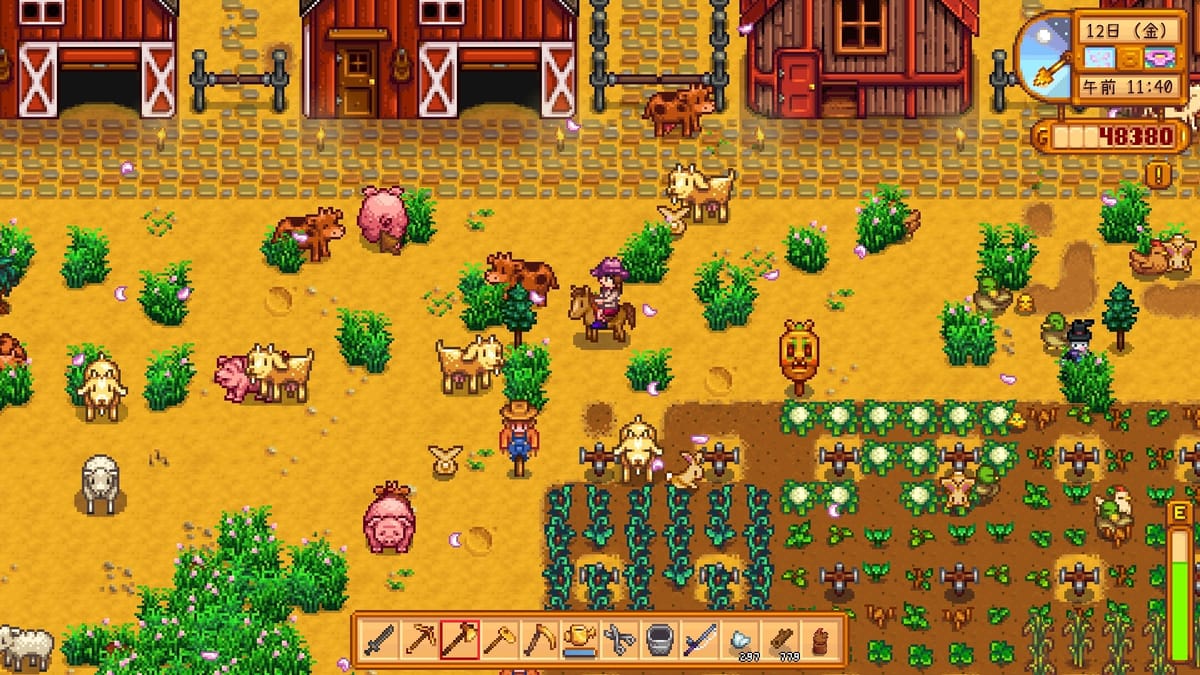Most Valuable Crops For Each Season In Stardew Valley

Stardew Valley, an idyllic haven where the land is your canvas and farming is the brushstroke of choice, has captivated players with its serene gameplay and deep agricultural mechanics. A core part of the Stardew Valley experience lies in choosing the right crops to cultivate each season for maximum profitability. Whether you're a seasoned farmer or a newcomer to Pelican Town, understanding the most valuable crops for each season is essential for optimizing your farm's income.
Spring: Strawberries, Rhubarb, Cauliflower
Spring ushers in a fresh start for Stardew Valley farmers, and with it comes the opportunity to plant lucrative crops. Strawberries stand out as the crown jewel of spring. Although seeds are only available during the Egg Festival on the 13th, they yield high profits, especially when planted early using Deluxe Speed-Gro to ensure an extra harvest. Each strawberry plant can be harvested multiple times, providing continuous income throughout the season.
For those unable to attend the Egg Festival or looking to diversify, Rhubarb and Cauliflower are excellent choices. Rhubarb, purchasable from the desert trader, offers a high selling price per crop. Cauliflower, while available from Pierre’s store, can produce giant crops under the right conditions (when planted in a 3x3 grid), significantly enhancing its value.
Summer: Blueberries, Starfruit, Hops
Summer's bounty is plentiful, with Blueberries, Starfruit, and Hops dominating as the top earners. Blueberries, like strawberries, can be harvested multiple times after maturing and yield multiple berries per plant, making them a steady source of income throughout the season.
Starfruit, however, is the true gem of summer. Seeds can be bought in the desert and, while requiring a significant upfront investment, the fruits command a high selling price, especially when turned into wine or jelly, making this crop highly lucrative for those with access to artisan equipment.
Hops present an interesting opportunity for continuous daily income. When planted early in summer and processed into Pale Ale via a keg, they provide a significant daily income stream for diligent farmers.
Fall: Cranberries, Pumpkins, Grapes
As autumn colors sweep over Stardew Valley, Cranberries emerge as the most profitable repeat harvest crop. Similar to blueberries and strawberries, they provide multiple berries per harvest and yield several pickings throughout the season.
Pumpkins, while a single-harvest crop, are highly valuable, particularly because they have a chance to grow into giant crops. Planning for a large field of pumpkins could result in a significant windfall if giant crops are achieved.
Grapes serve dual purposes: as a solid standalone crop and as a key ingredient for artisan goods. Their trellis nature means planning is required for farm layout, but their continuous yield during the season makes them a solid choice for fall farming.
Winter: Winter Seeds
While traditional crops cannot grow in winter without a greenhouse, Winter Seeds offer a unique farming opportunity. Crafted from foraged items (Winter Root, Crystal Fruit, Snow Yam, and Crocus), they grow into more forageable items that can be sold or crafted into more seeds. This cycle can be repeatedly leveraged for profit during a season when traditional farming options are limited.
Maximizing Crop Value Through Artisan Goods and Crop Quality
To truly maximize your farm's profitability across all seasons, consider investing in artisan goods production (kegs for wines and jellies, preserves jars) and quality-increasing techniques (fertilizer for higher quality crops). Artisan goods significantly increase the value of your crops, while high-quality produce sells for more at market.
In conclusion, Stardew Valley offers a plethora of choices when it comes to farming profitable crops each season. By planning ahead and investing wisely in seeds and equipment, you can ensure that your farm not only thrives but becomes a veritable goldmine. Remember to diversify your crops to safeguard against market fluctuations and to leverage artisan goods production wherever possible. Happy farming!



